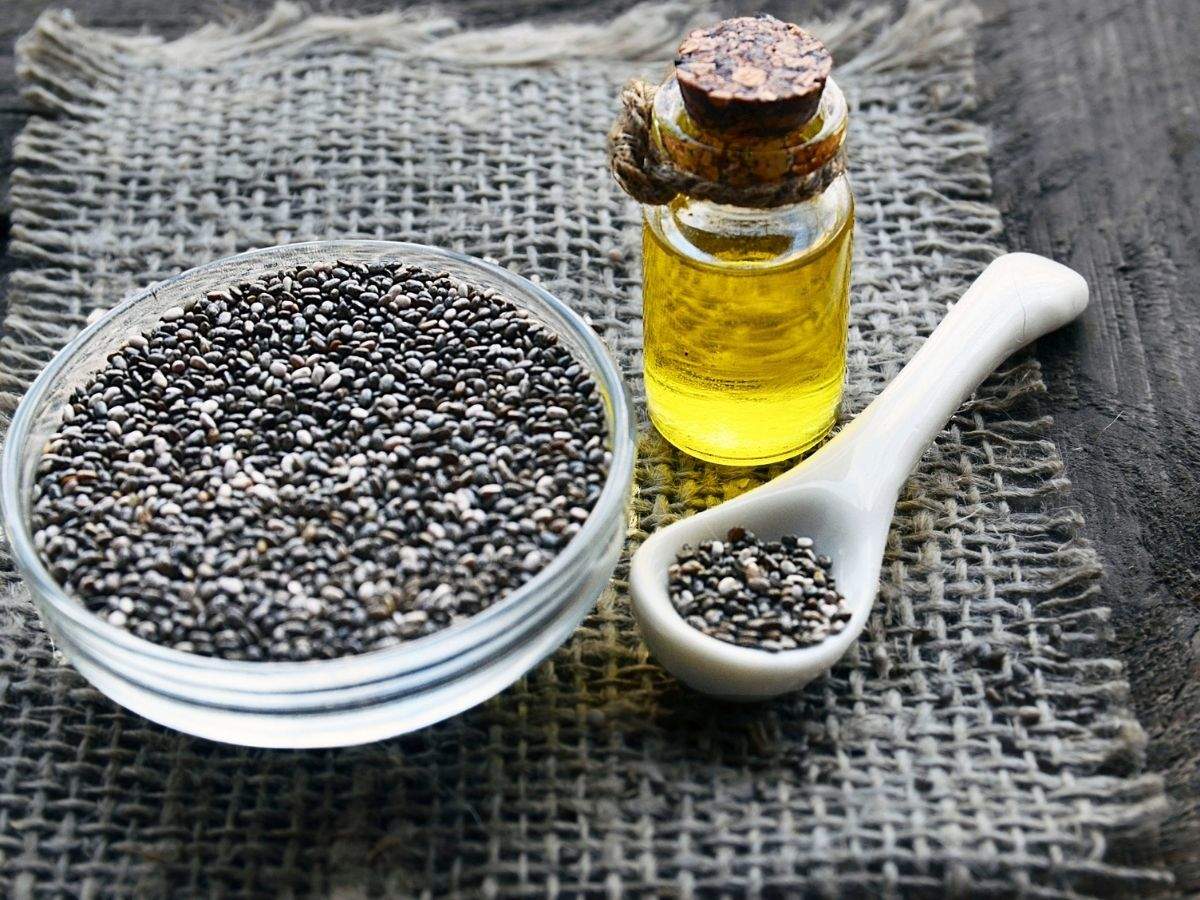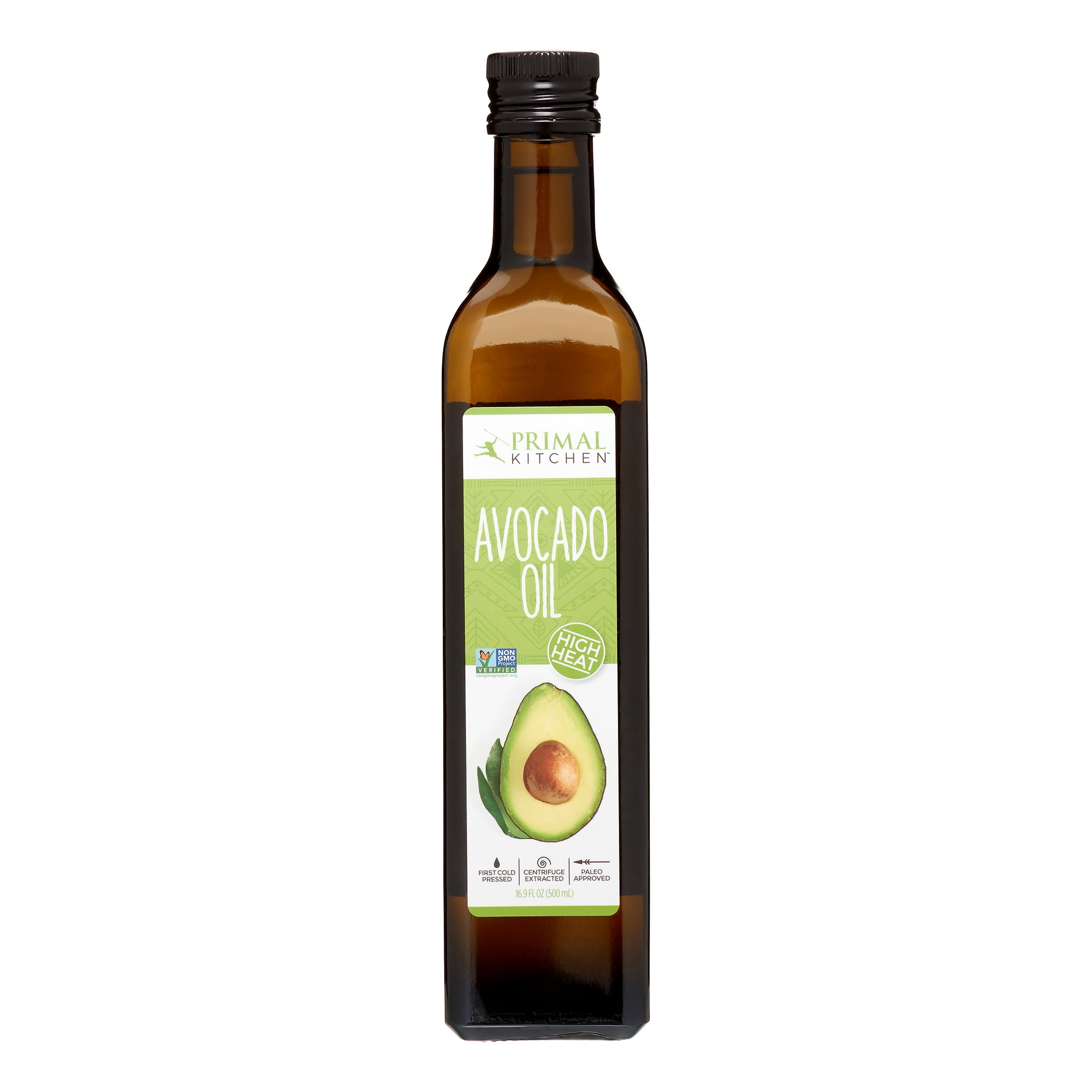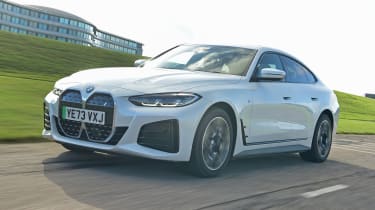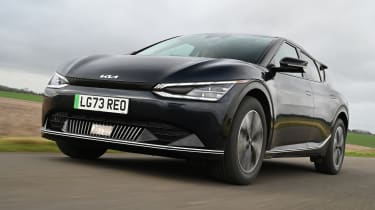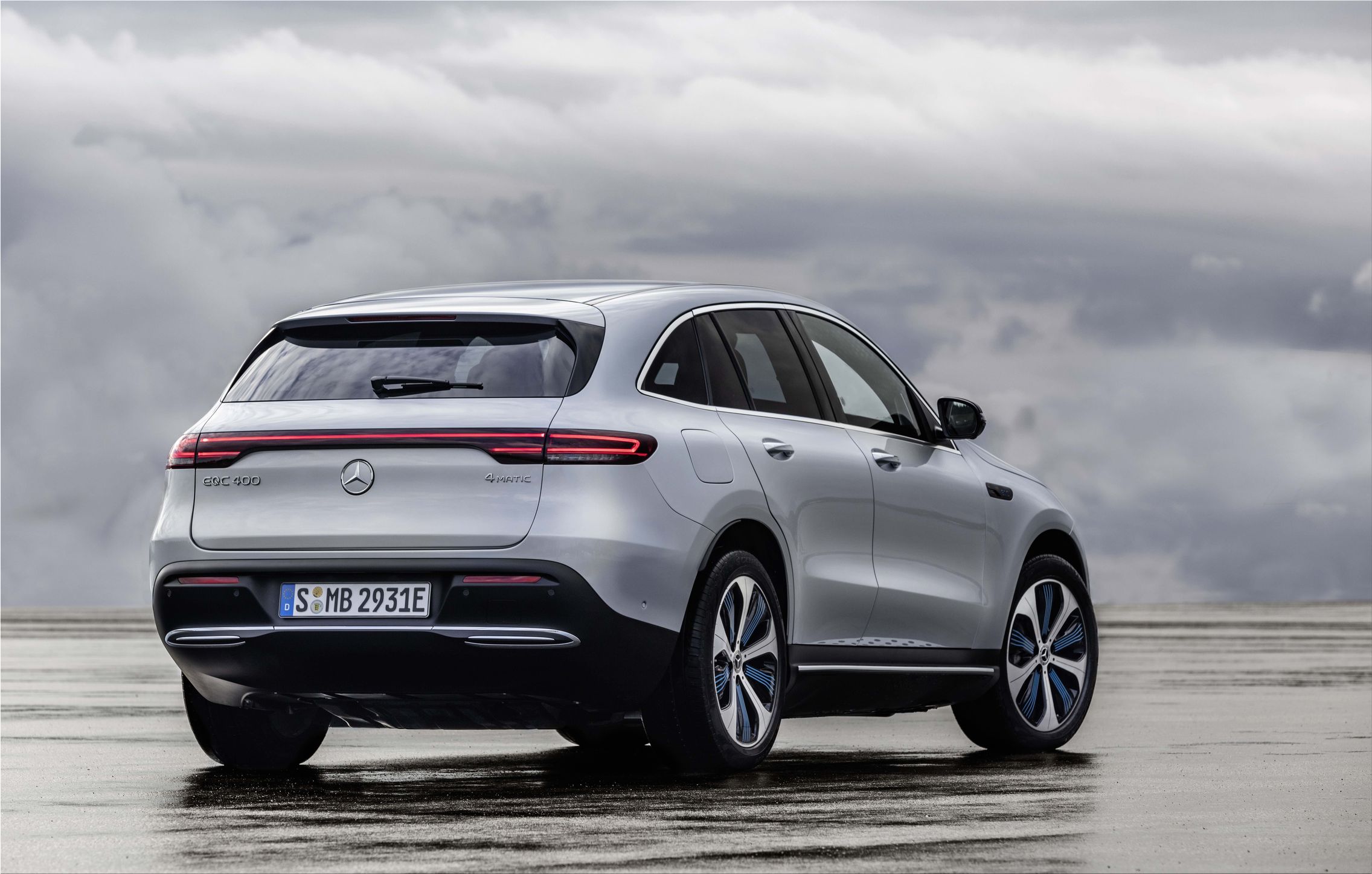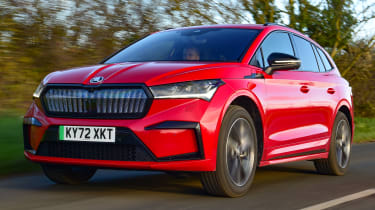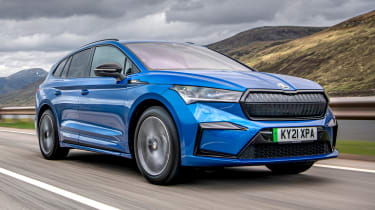Discover Pandipedia
Pandipedia is the world's first encyclopaedia of machine generated content approved by humans. You can contribute by simply searching and clicking/tapping on "Add To Pandipedia" in the answer you like. Learn More
Expand the world's knowledge as you search and help others. Go you!

Extra Virgin Olive Oil
Known for its rich oleic acid content, antioxidants, and health benefits against cardiovascular disease and inflammation[2][3][4][5].

Avocado Oil
High in monounsaturated fats, it offers a neutral flavor and works well for high-heat cooking like frying[2][3][4][5].

Canola Oil
Low in saturated fat and high in beneficial fatty acids, it’s affordable and versatile for various cooking methods, though often highly refined[3][4][5].

Sesame Oil
Contains bioactive compounds that may lower cholesterol and has a nutty flavor, suitable for sautéing and dressings[3][4][5].

Peanut Oil
A budget-friendly oil with a high smoke point, ideal for frying and roasting, containing a good amount of monounsaturated fat[1][2].
High Oleic Sunflower Oil
Specifically processed to retain higher monounsaturated fats, making it suitable for high-heat cooking[1][4][5].
Almond Oil
A naturally refined oil that’s rich in monounsaturated fats, suitable for a variety of cooking and can help support healthy cholesterol levels[4][5].
Flaxseed Oil
High in omega-3 fatty acids, it’s best used raw in dressings or drizzled on dishes as heating it can degrade its beneficial compounds[4][5].
Grapeseed Oil
Though often highly refined, it contains polyunsaturated fats and has a high smoke point, making it versatile for cooking[4][5].
Safflower Oil
Contains high levels of unsaturated fats, particularly in its high oleic variants, and is good for frying and baking due to its high smoke point[3][4][5].
Coconut Oil
Rich in saturated fats, it should be used minimally but can be incorporated for flavor and in moderation within certain diets[2][4][5].

Chia Seed Oil
Offers omega-3 fatty acids and is best used in salad dressings or cold dishes rather than for cooking[3][4].
High Oleic Safflower Oil
This oil variant is low in saturated fat and good for various cooking applications due to its stability[3][4].
Walnut Oil
Best used raw or at low temperatures due to its fragile nature, it provides a rich flavor in dressings and drizzles[2][4][5].
Sunflower Oil
Common yet often highly refined, it has a neutral flavor and high smoke point but is usually low in healthful fatty acids[4][5].
Everyday Cooking Olive Oil
A versatile and budget-friendly choice for everyday cooking needs that combines flavor with health benefits[5].

California Olive Ranch Extra Virgin Olive Oil
A popular choice known for its quality and health benefits, suitable for various cooking applications[3][5].
Primal Kitchen Avocado Oil
Renowned for being high-quality and naturally refined, great for high-heat cooking and baking[4][5].
Spectrum Organic Safflower Oil
A certified organic oil, excellent for frying and has a high smoke point[3][4].
Filippo Berio Mild & Light in Colour Olive Oil Spray
A nonaerosol spray that combines light olive oil with extra virgin for versatile use[4].
Let's look at alternatives:
- Modify the query.
- Start a new thread.
- Remove sources (if manually added).
- Request a manual search from our human research team.

Stress is a natural human response that can significantly influence both mental and physical health. While a moderate level of stress can be beneficial, chronic stress can lead to serious health complications affecting various body systems.
Understanding Stress

Stress is defined as a state of worry or mental tension caused by difficult situations. It triggers a biological response that prepares the body to respond to challenges, often referred to as the 'fight or flight' response. This response is mediated by the release of hormones such as adrenaline and cortisol, which increase heart rate, blood pressure, and energy supplies[6]. In short bursts, stress can enhance performance and focus; however, when stress becomes chronic, it can severely disrupt bodily functions and impact health[8][9].
Effects of Chronic Stress
Mental Health Consequences

Chronic stress is associated with a range of mental health issues, including anxiety and depression. It can exacerbate pre-existing mental health conditions and significantly impair cognitive functions such as concentration and memory[6][9]. People suffering from ongoing stress often exhibit symptoms such as irritability, fatigue, and feelings of overwhelm. There is a strong connection between chronic stress and disorders like post-traumatic stress disorder (PTSD) and other anxiety-related conditions[7][8].
Moreover, chronic stress can lead to burnout, a state of emotional, physical, and mental exhaustion caused by prolonged and excessive stress[2][4]. Many individuals find it increasingly difficult to cope with daily responsibilities, leading to a further decline in mental well-being.
Physical Health Implications
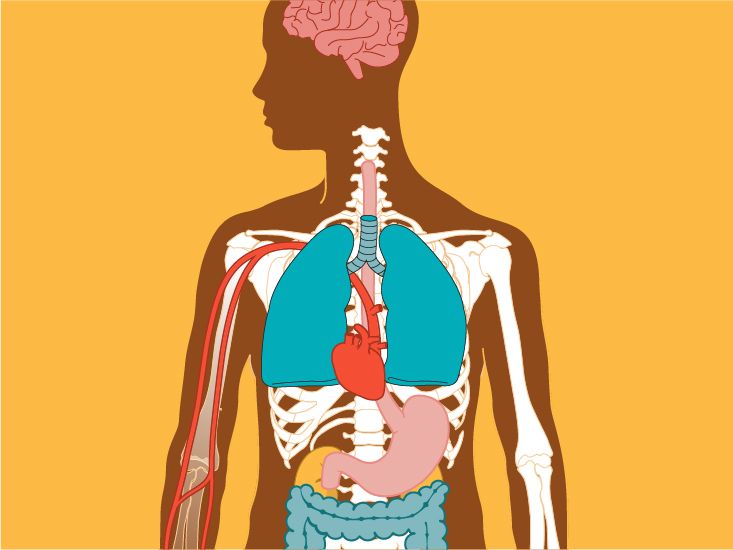
The physical ramifications of chronic stress are equally concerning. Prolonged activation of the stress response can negatively impact several major bodily systems:
Cardiovascular System: Chronic stress leads to elevated levels of cortisol, which can increase blood pressure and heart rate, heightening the risk of heart attacks and strokes[3][6][9]. Over time, this might cause or worsen existing cardiovascular diseases.
Immune System: Initially, the stress response can boost the immune system, enabling the body to fend off infections. However, prolonged stress can suppress immune function, making individuals more susceptible to illnesses and infections[1][4][8]. This immune suppression can lead to chronic inflammation, an underlying factor in many diseases, including autoimmune disorders[5].
Endocrine System: Chronic stress affects hormonal balance, which can influence reproductive health. Stress can lead to disturbances in menstrual cycles for women and erectile dysfunction in men, as well as changes in libido for both genders[1][8]. Additionally, chronic stress has been linked to conditions such as type 2 diabetes due to elevated cortisol levels disrupting glucose metabolism[9].
Digestive System: The gut-brain connection plays a vital role in how stress impacts digestive health. Chronic stress can lead to conditions like irritable bowel syndrome (IBS), heartburn, and other gastrointestinal issues due to changes in gut bacteria and increased acid production[4][9]. Symptoms may include nausea, diarrhea, or constipation, which can significantly reduce quality of life.
Musculoskeletal System: Stress causes muscle tension, which can lead to chronic pain conditions, including headaches and back pain. This ongoing muscle tension prevents relaxation and exacerbates physical discomfort, creating a vicious cycle of stress and pain[8][9].
Coping with Stress

Given that stress can severely impact health, it’s crucial to develop effective coping strategies. Several techniques can help manage stress and mitigate its effects:
Self-Care Practices: Engaging in regular physical activity, ensuring adequate sleep, and eating a balanced diet can improve overall health and help manage stress. Exercise, in particular, is effective in reducing stress levels and improving mood by releasing endorphins[2][4].
Mindfulness and Relaxation Techniques: Practices like deep breathing, meditation, or yoga can enhance relaxation. These activities help in managing the body's stress response, enabling better emotional regulation[4][5].
Social Support: Building connections with friends and family provides emotional support, which can buffer against the adverse effects of stress. Talking about one’s feelings can also alleviate the burden of chronic stress[6][9].
Professional Help: If stress becomes overwhelming, seeking assistance from mental health professionals can be beneficial. Cognitive Behavioral Therapy (CBT) is particularly effective in modifying the thought patterns associated with stress, helping individuals develop healthier coping mechanisms[7][9].
Setting Boundaries: Learning to say no to non-essential commitments can diminish feelings of being overwhelmed. Establishing limits can create a more manageable daily routine, reducing overall stress[9].
Conclusion
:max_bytes(150000):strip_icc()/GettyImages-1273890998-3e61d3cfdd5a49bdaf27cb9fe0c0b8a6.jpg)
Stress is an integral part of life; however, its chronic form poses a serious threat to overall health. Its effects permeate various body systems, leading to both mental and physical health challenges. To mitigate these impacts, it is essential to recognize stressors and adopt effective coping strategies. By prioritizing self-care, social support, and professional guidance when necessary, individuals can significantly improve their resilience against the many deleterious effects of stress.
Let's look at alternatives:
- Modify the query.
- Start a new thread.
- Remove sources (if manually added).
- Request a manual search from our human research team.
Get more accurate answers with Super Search, upload files, personalised discovery feed, save searches and contribute to the PandiPedia.
Early Sound Signals
Early lighthouse fog-signals included bells and guns[1]. In 1811, two bells were supported on standards on the balcony of the Bell Rock Lighthouse to provide sound in all directions[1]. These bells were tolled by the same machine that caused the lighting apparatus to revolve[1]. In 1817, a whistle sounded by air compressed by the rise and fall of the tide was considered, but it was not deemed sufficiently satisfactory[1].
Developments in Horn and Siren Technology
Mr. Daboll designed a trumpet having a metallic reed sounded by compressed air in 1851[1]. In 1860, it was patented the application of condensed air to the sounding of whistles or horns, with machinery to produce the revolution of the horn whilst sounding[1]. The lights of the area could be strengthened by condensing system technology[1].
Further Experiments and Innovations
In 1863, Professor Holmes devised a trumpet, having a reed of German silver sounded by compressed air, with an automatic arrangement whereby the trumpet can be placed at a distance from the air compressor and engines[1]. In 1874, Professor Tyndall reported to the Trinity House that the siren is the most powerful fog-signal tried in England and is specially powerful when local noises have to be overcome[1]. However, some have considered, during fog, that light may often become a source of confusion to the mariner; and, in the event of another light being required in the neighbourhood, it becomes a deduction from the means of distinguishing it from the lights which existed previous to its establishment[1].
Automatic Mechanisms and Distinctive Characteristics
There was the development of the automatic meter for producing intermittent lights by the flow of gas[1]. This meter always passes a sufficient quantity of gas to secure the constant burning of a small jet, and at regular intervals there is an increased supply that goes to the main burner until the action of the meter cuts off the larger supply and the small jet is again left burning alone[1]. For additional means of recognition, the forces influencing the relative visibility of such distinct colors also came into focus[1]. The relative stability of these attributes has been of great importance[1].
Challenges and Proposed Solutions
There have been identified that, depending on geographical position, towers can be subject to 'almost incessant tremor'[1], or that the slope of the ledges directs the mass of water obliquely[1]. Also, if the rock overhangs, owing to the wearing action of the waves, the tower should, if possible, be built at a distance from the place where this dangerous action is in progress[1]. For these reasons, mass and weight are preferred, as the strength which results is constantly subject to be impaired by the loosening of such fixtures[1].
Let's look at alternatives:
- Modify the query.
- Start a new thread.
- Remove sources (if manually added).
- Request a manual search from our human research team.
Let's look at alternatives:
- Modify the query.
- Start a new thread.
- Remove sources (if manually added).
- Request a manual search from our human research team.
Implications of Warren Buffett's Berkshire Hathaway Selling Half Its Apple Stock

Warren Buffett’s decision for Berkshire Hathaway to sell nearly half of its stake in Apple Inc. has far-reaching implications, highlighting a shift in investment strategy and raising questions about the future of both companies. Here, we explore the various dimensions of this significant financial maneuver.
Shift in Investment Strategy
The sale of nearly 390 million shares resulted in a reduction of Berkshire's Apple holdings from $174 billion to approximately $84 billion, signifying a substantial shift in Buffett's typically long-term investment philosophy. This action represents the seventh consecutive quarter in which Berkshire sold more equities than it purchased, suggesting a perhaps cautious or strategic pivot in how Buffett approaches his investments, particularly in the tech sector[3][5].
Buffett has also previously indicated a pattern of trimming his Apple stake, having reduced it by 13% in the first quarter, which hints at a broader reevaluation of how Berkshire positions itself in the technology market and is potentially affected by concerns about Apple’s growth prospects[2][5].
Increased Liquidity and Cash Reserves
Following this substantial sale, Berkshire’s cash reserves rose dramatically to nearly $277 billion, up from $189 billion in the first quarter. This increase in liquidity may signal that Berkshire is preparing for future investment opportunities or acquisitions. Indeed, Buffett has mentioned he is on the lookout for significant acquisitions but is cautious and waiting for conditions that present low-risk, high-reward opportunities[4][8]. The surge in cash reserves serves as a buffer against market uncertainty while allowing for potential strategic moves in the future.
Market Perception and Stock Valuation Concerns
Berkshire's divestment from Apple could also impact broader market sentiments regarding the tech giant. Historically, Buffett’s investments have influenced other investors and market trends. His recent actions suggest a potential loss of confidence in Apple, which has seen declining growth rates and substantial challenges, particularly in markets like China[6]. As a major investor in Apple, Buffett's shift away from the company could lead other stakeholders to reevaluate their positions, potentially driving down the stock's valuation further.
Additionally, Apple's struggles to deliver compelling innovations, particularly in the face of increasing competition in artificial intelligence, raise concerns regarding its market position and growth trajectory. The implications of these challenges are amplified by Buffett's sell-off, as he is known for his conservative approach to high valuations and volatile market conditions[5][6].
Tax Strategy Considerations
Buffett’s sales appear to be aligned with considerations regarding potential increases in capital gains tax. His comments at the annual meeting suggested that he views selling part of his stake as a way to benefit Berkshire shareholders in the long run, should tax rates change in the future. This strategic move to liquidate 'a little Apple' amidst favorable market conditions may also reflect Buffett's philosophy of profit-taking while the market is strong[4][5].
Broader Market Context
This significant divestment coincides with a broader market correction, particularly impacting the tech-heavy Nasdaq Composite, which has recently experienced a downturn. Analysts suggest that the scale of Berkshire's sales could signal a broader sell-off trend among investors in tech stocks, which have been subject to increased volatility in light of global economic uncertainties, including rising unemployment rates and concerns regarding monetary policy decisions by the Federal Reserve. This environment adds layers of complexity to Buffett's decision-making and investment approach[7][8].
Future of Berkshire Hathaway's Portfolio

Despite the reduction in its Apple stake, the tech giant remains the largest investment within Berkshire's portfolio, underscoring the paradox in Buffett's strategy—while he has sold off a significant portion, he continues to maintain a substantial position. The recent moves within Berkshire’s portfolio, which has seen its allocation in publicly traded stocks decline from 63% to 53%, suggest a strategic pivot towards greater liquidity and caution amid perceived market volatility[6][8].
Conclusion
Warren Buffett’s significant reduction in Berkshire Hathaway's holdings in Apple reflects a complex interplay of market dynamics, liquidity management, and strategic foresight in uncertain economic conditions. While it raises eyebrows regarding Apple’s future growth potential, it also underscores Buffett's cautious yet adaptable investment philosophy. By prioritizing liquidity and maintaining important stakes in select companies, Berkshire Hathaway is positioning itself for possible future opportunities, even as it navigates the shifting landscape of technology investments.
Let's look at alternatives:
- Modify the query.
- Start a new thread.
- Remove sources (if manually added).
- Request a manual search from our human research team.

The ancient civilizations that showed great respect for dogs were both ancient Persia and ancient Egypt. In ancient Persia, dogs were believed to guard the bridge between the living and the dead, with their treatment impacting one's chances of attaining paradise; they received funerary rites comparable to humans and played a key role in mortuary rituals[1]. Similarly, in ancient Egypt, dogs were considered sacred and were often depicted in art and mythology. Anubis, the jackal-headed god, was revered as the guardian of the dead, and the Egyptians mummified dogs to accompany their owners in the afterlife, showcasing their significant reverence for dogs[2][3].
Let's look at alternatives:
- Modify the query.
- Start a new thread.
- Remove sources (if manually added).
- Request a manual search from our human research team.
Get more accurate answers with Super Search, upload files, personalised discovery feed, save searches and contribute to the PandiPedia.
In the realm of artificial intelligence, particularly in computer vision, segmentation tasks are crucial for a better understanding of images. Meta AI Research introduced an innovative model, the Segment Anything Model (SAM), aimed at transforming image segmentation. This blog post breaks down SAM's functionality, its deployment, and its remarkable capabilities.
Overview of Segment Anything

The SAM project revolves around creating a foundation model specifically designed for segmentation tasks in images. SAM distinguishes itself by being able to interact with various inputs to output segmentation masks in real-time, dealing with ambiguity effectively. The core concept is to empower users with a promptable segmentation task, allowing the model to generate relevant segmentation masks based on either specified prompts or automated methods.
The team at Meta initiated this extensive project due to limitations seen in large-scale segmentation, especially concerning the need for vast annotated datasets. SAM utilizes a massive dataset dubbed SA-1B, which contains over 1 billion masks generated from 1 million images. This dataset includes high-resolution, licensed images that consider privacy concerns, ensuring ethical practices in data usage.
Architecture and Functionality
SAM is powered by a heavy-weight image encoder that enhances segmentation capabilities. It operates through three primary components: an image encoder, a prompt encoder, and a mask decoder. The image encoder processes the input image, while the prompt encoder assists the model in responding to various prompts, leading to the generation of high-quality masks. These masks allow for precise object identification and separation in images, making it invaluable for myriad applications ranging from autonomous vehicles to professional photo editing.
One of the standout features is SAM's versatility in adapting to various segmentation tasks without the need for fine-tuning. This zero-shot learning ability allows SAM to generate segmentation masks for new and unseen tasks effectively. By prompting SAM with different types of input, users can retrieve accurate segmentation masks that identify foreground objects regardless of the complexity of the image.
Training and Innovation
The training process for SAM involved unique methodologies that deviate from traditional methods. Instead of having a rigid training protocol, SAM was trained using multiple data collection methods to ensure a robust and diverse training set. These methods include assisted manual annotations, semi-automatic annotations, and fully automatic mask generation. This multifaceted approach ensures the model is exposed to a variety of tasks and real-world data.
Moreover, the team conducted extensive experiments to evaluate SAM's performance across different datasets and prompts. They compared SAM against existing state-of-the-art models in segmentation and consistently found that it significantly outperformed them. This is confirmed through empirical analysis, where SAM demonstrated superior performance in generating high-quality masks across various scenarios, proving its reliability and efficiency in different applications.
Addressing Challenges in Segmentation
Despite its capabilities, SAM acknowledges certain challenges present in the field of image segmentation. The model is built to recognize potential biases that arise during the segmentation process, particularly when handling ambiguous prompts. To address this, SAM can refine its outputs through a mechanism that focuses on additional relevant input points to enhance model accuracy.
Furthermore, SAM's design accommodates different user requirements, ensuring flexibility in various applications. It can be integrated into systems that require real-time image segmentation, proving invaluable for fields such as robotics, autonomous driving, and medical imaging.
Real-World Applications and Future Prospects
The implications of SAM extend far beyond academic research. It has significant potential in commercial applications, including e-commerce, automated inspection, and personalized content generation. As organizations increasingly depend on advanced machine learning models for image recognition and processing, SAM stands out for its practical efficiency and reliability.
Meta intends to continue improving SAM with further research, aiming to enhance its capabilities and broaden its applicability. Future iterations may include more sophisticated ways to generate segmentation masks, catering to complex use cases that demand even higher accuracy.
In conclusion, the Segment Anything model is a pioneering approach to image segmentation that has the potential to redefine how machines interpret visual data. With its groundbreaking methods, SAM not only enhances accuracy but also addresses many of the challenges in current segmentation technologies, establishing a solid foundation for future innovations in computer vision.

Let's look at alternatives:
- Modify the query.
- Start a new thread.
- Remove sources (if manually added).
- Request a manual search from our human research team.
Leonardo da Vinci is widely recognized as a quintessential Renaissance man due to his extensive contributions to various fields, including art, science, engineering, and anatomy. This comprehensive report explores how Leonardo excelled in multiple domains, highlighting his notable accomplishments based on documented sources.
Early Life and Education
Born in 1452 in Anchiano, Tuscany, Leonardo was the illegitimate son of a Florentine notary and a young peasant woman. Growing up on his father's estate, he received a basic education in reading, writing, and arithmetic but did not pursue formal studies in Latin or higher mathematics until later in life[2][5]. From a young age, he exhibited artistic talent, leading his father to apprentice him at around age 15 to the renowned sculptor and painter Andrea del Verrocchio of Florence. This apprenticeship provided Leonardo with multifaceted training in painting, sculpture, and mechanical arts[2][3][5].
Artistic Mastery

Leonardo's contributions to art include some of the most famous paintings in the world, such as the 'Mona Lisa' and 'The Last Supper.' His understanding of human anatomy, perspective, and light was unparalleled. He used mathematical principles like linear perspective to create the illusion of depth on flat surfaces, as seen in 'The Annunciation' and 'The Last Supper'[1][7].
In 'The Last Supper,' Leonardo utilizes perspective to create a central focal point on Jesus, surrounded by the Apostles with distinct emotive expressions[2][3]. His portrait of 'Mona Lisa' is renowned for its use of the 'sfumato' technique, which creates subtle transitions between colors and tones, making the expressions appear dynamic and lifelike[1][7].
Engineering and Inventions

Leonardo's notebooks reveal a prolific mind teeming with innovative designs and engineering concepts far ahead of his time[1][6][9]. Among his many ideas were prototypes for gliders, helicopters, parachutes, diving suits, cranes, gearboxes, and military weapons[1][7][9]. His fascination with flight led him to create numerous designs for ornithopters and the 'aerial screw,' an early concept of a helicopter[1][7].
Though many of his designs were not built or tested during his lifetime, modern recreations have sometimes validated his theories, demonstrating that his imagination and understanding of emerging scientific principles were centuries ahead of practical realization[1][6][9]. Da Vinci also conceptualized advanced war machines, such as tanks and multi-barreled guns, which anticipated modern military technology[1][7].
Contributions to Science
Leonardo's approach to science was characterized by meticulous observation and detailed recording. His empirical methods, although not formally recognized during his time, laid the groundwork for modern scientific inquiry[3][6][9]. He made significant advancements in anatomy, documenting the structure and function of the human body through detailed sketches and dissections[6][8][9].

His anatomical studies included the human skeleton, muscles, brain, and various internal organs, offering unprecedented insights into human physiology[6][8]. Leonardo's Vitruvian Man, a study of human proportions, exemplifies the intersection of art and science, embodying the Renaissance ideal of linking microcosm and macrocosm[5][6].
Impact on Water Science and Engineering

Leonardo was fascinated by the dynamics of water, which he described as 'the vehicle of nature'[1][7][4]. His extensive studies on fluid dynamics, the hydrological cycle, and the properties of water flow influenced modern water engineering. In his 'Codex Leicester,' he formulated numerous hypotheses about water, some of which accurately described phenomena like the impact of flow speed on pressure and the hydrological cycle[1][4][7].
Additionally, Leonardo designed projects to manipulate water through canals and reservoirs for flood management and irrigation. Although not all his ideas were practical, his scientific approach to studying water laid important foundations for future developments in the field[4][7].
Legacy and Influence
Leonardo da Vinci's insatiable curiosity and interdisciplinary approach have inspired countless artists, scientists, and engineers. His methodology of integrating observational skills with artistic talent allowed him to excel in multiple disciplines. The broad range of his intellectual pursuits, from engineering and anatomy to art and hydrodynamics, underscores his stature as a polymath[3][9].
Leonardo's scientific hypotheses and inventive designs, though often unrecognized during his lifetime, paved the way for numerous technological advancements. His unique ability to visualize and solve complex problems through drawings continues to be celebrated as a testament to his genius[1][2][6].
Conclusion

Leonardo da Vinci's achievements across various fields are a testament to his remarkable intellect and innovative spirit. His contributions to art, science, engineering, and anatomy not only reflect his diverse talents but also his pioneering approach to understanding and representing the natural world. Leonardo embodies the essence of the Renaissance man, whose legacy continues to influence and inspire modern thought and technology.
In synthesizing knowledge from multiple domains and applying a scientific approach to artistic endeavors, Leonardo da Vinci has left an indelible mark on history, solidifying his place as one of the greatest polymaths of all time.
Let's look at alternatives:
- Modify the query.
- Start a new thread.
- Remove sources (if manually added).
- Request a manual search from our human research team.
Setting influences a story's conflict by creating environments that challenge characters and amplify their struggles. For example, environmental conflicts can introduce complications that make it harder for protagonists to achieve their goals, such as facing a backstabbing coworker in uncomfortable locations that heighten tension and stakes, rather than in safe, familiar spaces[1].
Additionally, the setting can embody a character's emotional state or mirror larger societal issues, adding depth to the plot. Historical settings or contextual symbolism can shape characters' actions and decisions, revealing how they respond to their circumstances and the inherent conflicts within[2][3].
Let's look at alternatives:
- Modify the query.
- Start a new thread.
- Remove sources (if manually added).
- Request a manual search from our human research team.

Kia Niro EV
Known for its reliability and quality production; it features a 64 kWh battery and offers a driving range of up to 253 miles[4].
Hyundai Kona Electric
A well-rounded SUV offering a driving range of up to 319 miles, praised for its refined driving experience and solid powertrain[3].
Tesla Model 3
Highly popular, featuring an improved range of up to 318 miles post-facelift, and known for its minimalist interior and high-tech features[5].
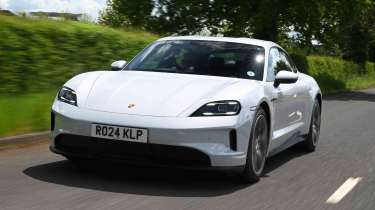
Porsche Taycan
A thrilling performance car with up to 421 miles of range; delivers a luxurious experience while maintaining Porsche's driving behavior[3].
BYD Dolphin
Offers great value as a small electric car with a respectable official range of 265 miles and a good amount of tech[5].

Nissan Leaf
A well-established model in the EV market, offering a practical family alternative with a range of 226 miles for the Plus variant[2][4].

Hyundai Ioniq 5
Recognized for its retro design and advanced tech; offers a range of up to 315 miles[3].
Audi e-tron GT
A grand tourer that combines speed and elegance with a range of up to 305 miles; known for its luxurious interior[1][3].

Volkswagen ID.3
A family-sized EV designed to be affordable, with smart technology and a range of up to 347 miles[2][5].
Mercedes EQC
Combines luxury with electric performance featuring a decent driving range and rapid charging capability[2].

Citroen e-C4
Offers practicality and comfort with a range of over 200 miles, suitable for family needs[3].
Skoda Enyaq
Provides excellent value with practicality, offering a range of over 250 miles and an intuitive infotainment system[3].

Ford Mustang Mach-E
A stylish SUV that combines dynamics with a range of around 250 miles, offering a spacious and tech-savvy interior[4].


Volkswagen ID. Buzz
Combines retro design with electric efficiency, offering spaciousness and practicality[1].
Let's look at alternatives:
- Modify the query.
- Start a new thread.
- Remove sources (if manually added).
- Request a manual search from our human research team.


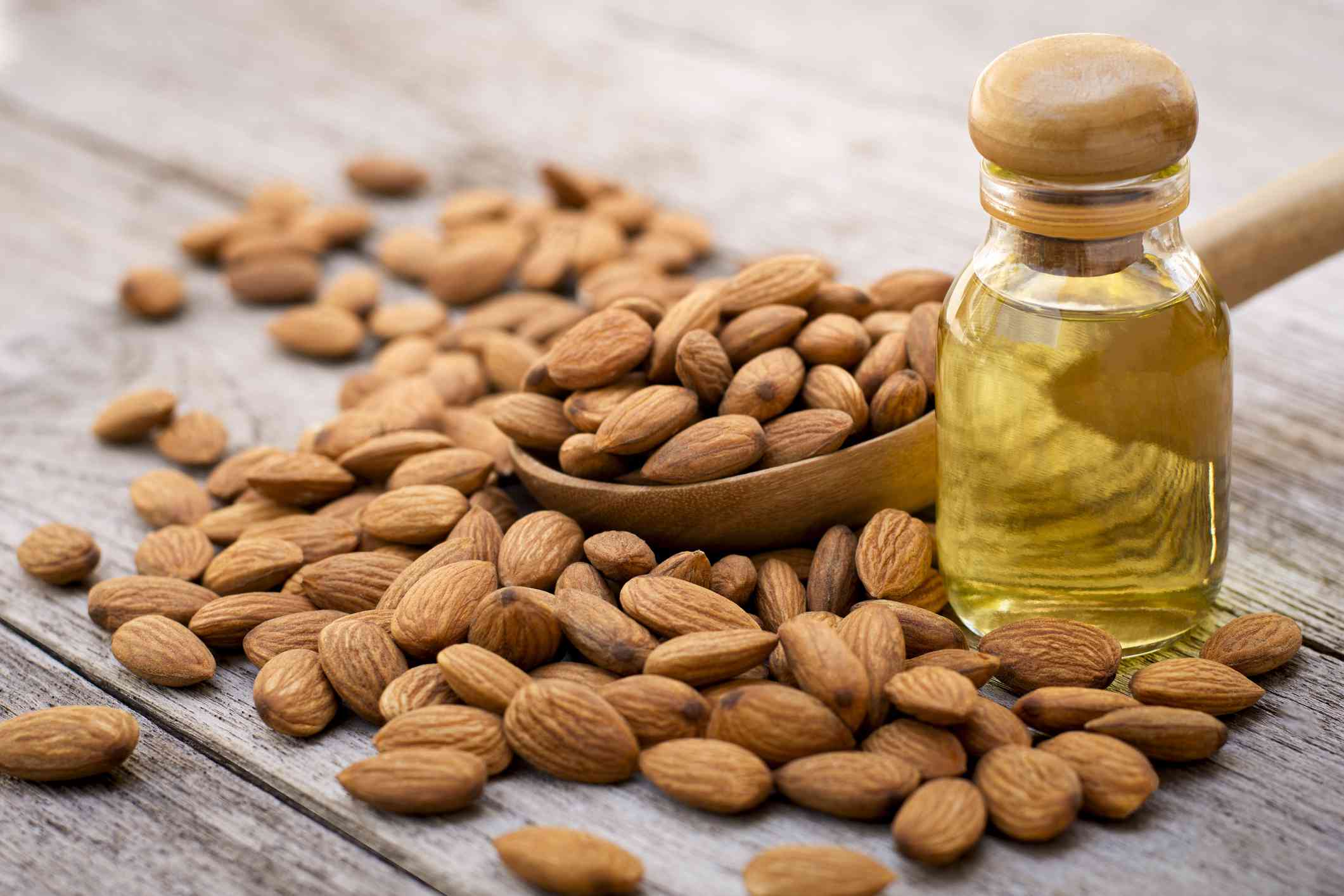


/GettyImages-1095153338-abcd50bfde8340689af5936745a572e9.jpg)


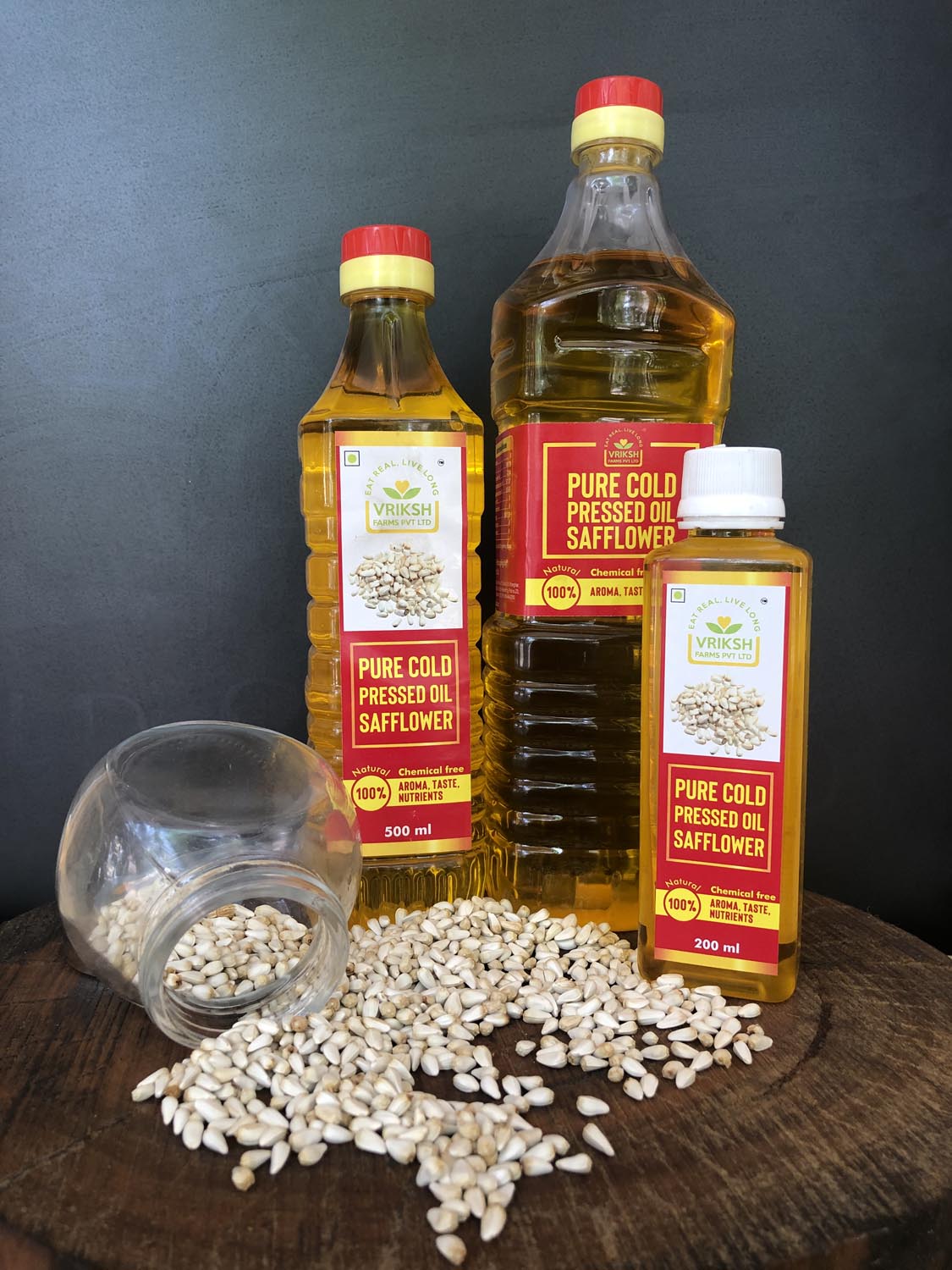

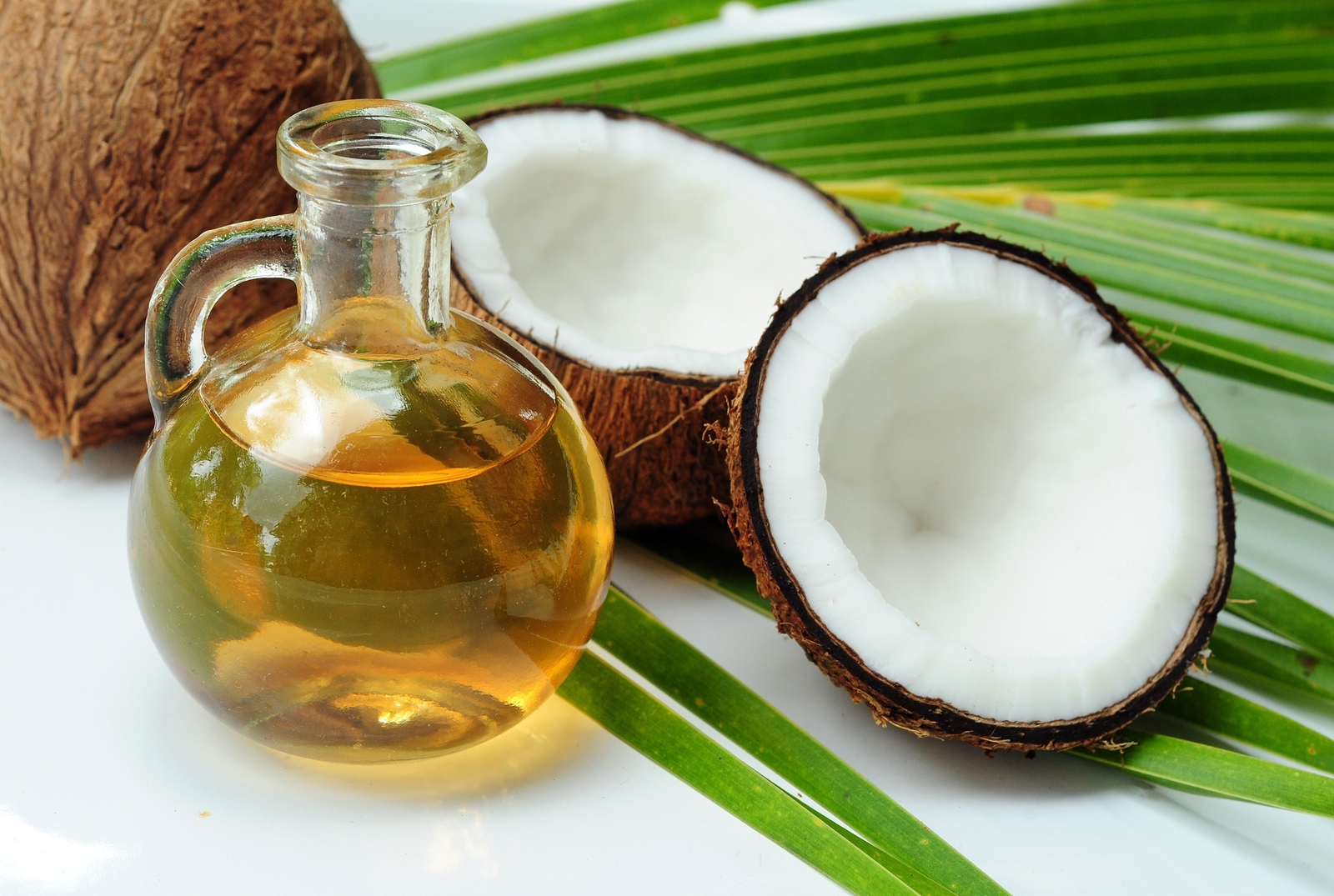
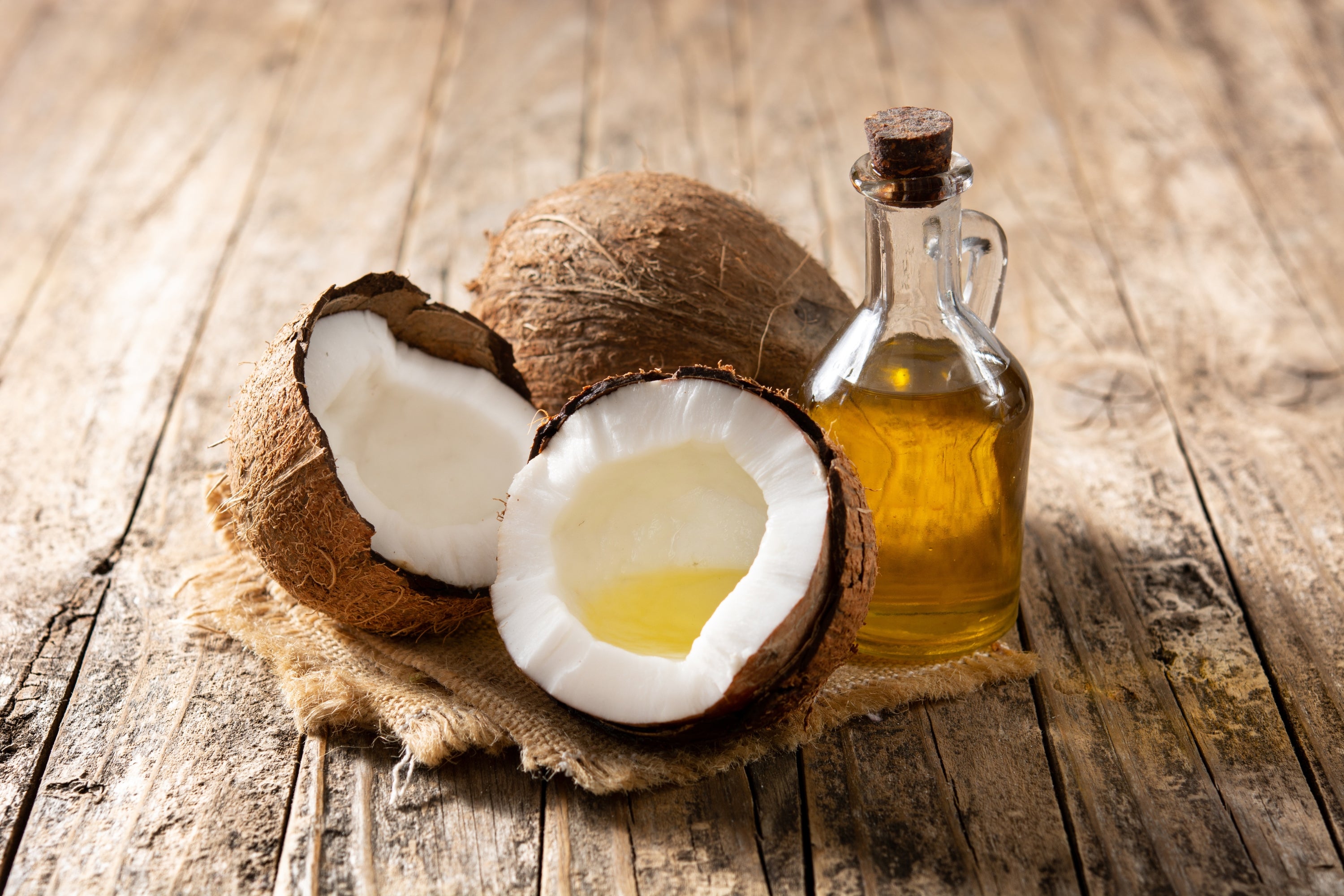

/https://media.azurestandard.com/files/2ffae0d1-4a42-46d1-8fdc-20a19a80bfc1)




